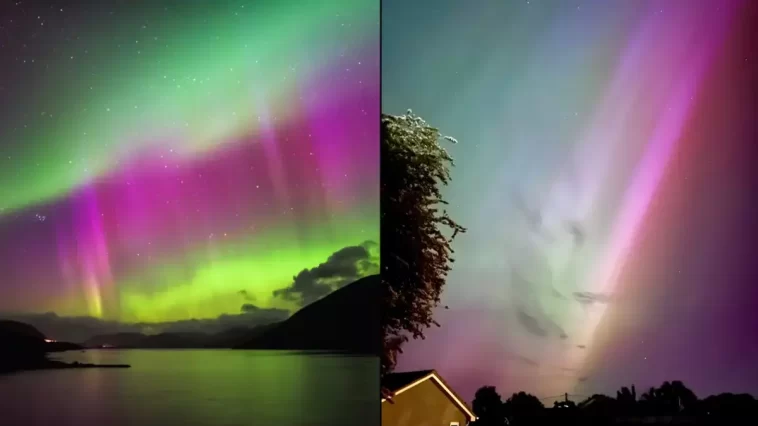Seeing the northern lights so vividly throughout the nation seems like one of the strangest things that has occurred this year.
We were all very perplexed when they suddenly appeared in the sky above the United Kingdom early this year. After then, it seemed to continue occurring for a select few fortunate individuals.
The Met Office has so verified that the northern lights will be visible again for a ‘once in a decade occurrence,’ continuing with that pattern.
It would be more prudent for them to begin paying rent now.
More frequent and further south than normal aurora borealis viewing is predicted in 2025 due to a reversal of the Sun’s magnetic field.

The Sun’s magnetic field undergoes a change around once every eleven years, and we are now nearing the conclusion of the’solar maximum’ phase.
During this time, the sun’s magnetic field is most active, resulting in solar flares that light up the sky with their renowned northern lights.
According to Krista Hammond, the manager of the Met Office Space Weather Operations Centre (MOSWOC), space weather is now experiencing a maximum phase, which is characterised by an increase in solar activity and the frequency of sunspots. The exact implications for specific solar occurrences that affect Earth cannot be predicted at this time, but it does suggest that the likelihood of seeing the aurora borealis in the United Kingdom will increase in the months ahead.
“Although we are currently experiencing the solar maximum phase, which may extend for a year, pinpointing the precise peak number of sunspots will require some time after the event has occurred.”
There is a continual possibility of space weather events, such as the largest geomagnetic storm on Earth in twenty years in the spring, due to this entire “maximum phase” thing.

The Met Office saw auroras visible as far south as portions of central and southern England and Wales earlier in October, thanks to a comparable but weaker occurrence.
Next year, the solar maximum is expected to be achieved, expanding the region that may be seen by the northern lights, according to scientists.
Once this phase ends, the Sun’s surface acitivity will go downhill as we approach solar minimum in the years to come.
Although the overall amount of sunspots will begin to decrease after solar maximum, space weather will persist throughout the solar cycle despite this. The bigger occurrences may occur when the Sun returns to solar minimum in certain solar cycles, as pointed out by Hammond.
“At MOSWOC, we are tasked with anticipating these events over the next months and years in order to mitigate the possibility of any interference with satellite operations or certain ground-based infrastructure.”




